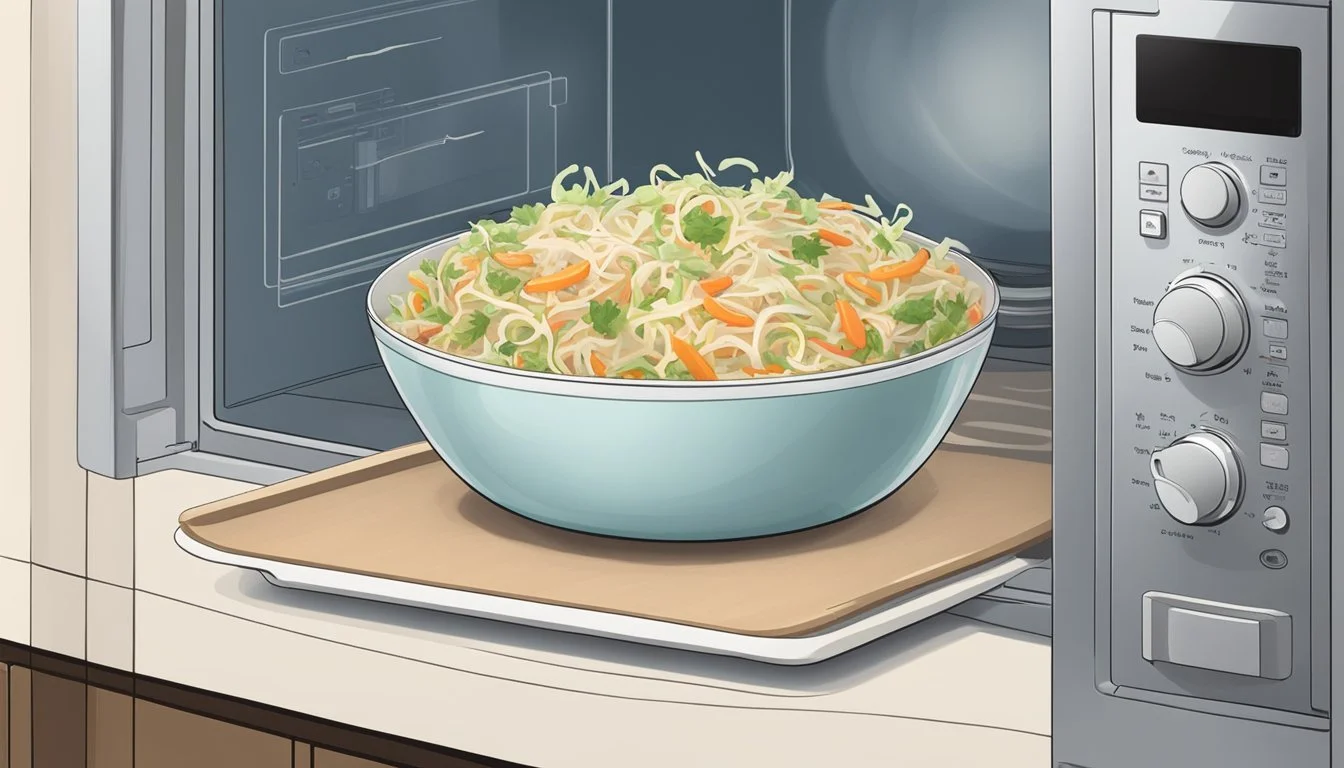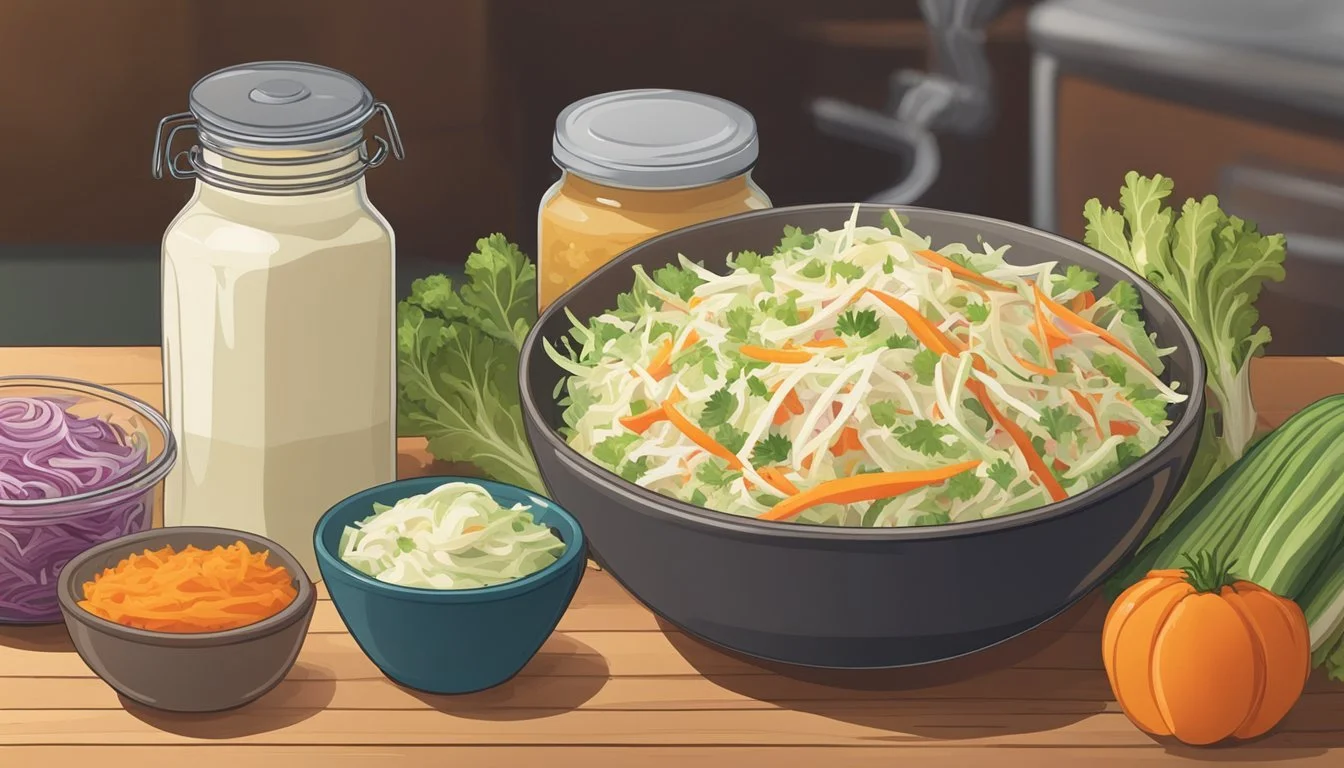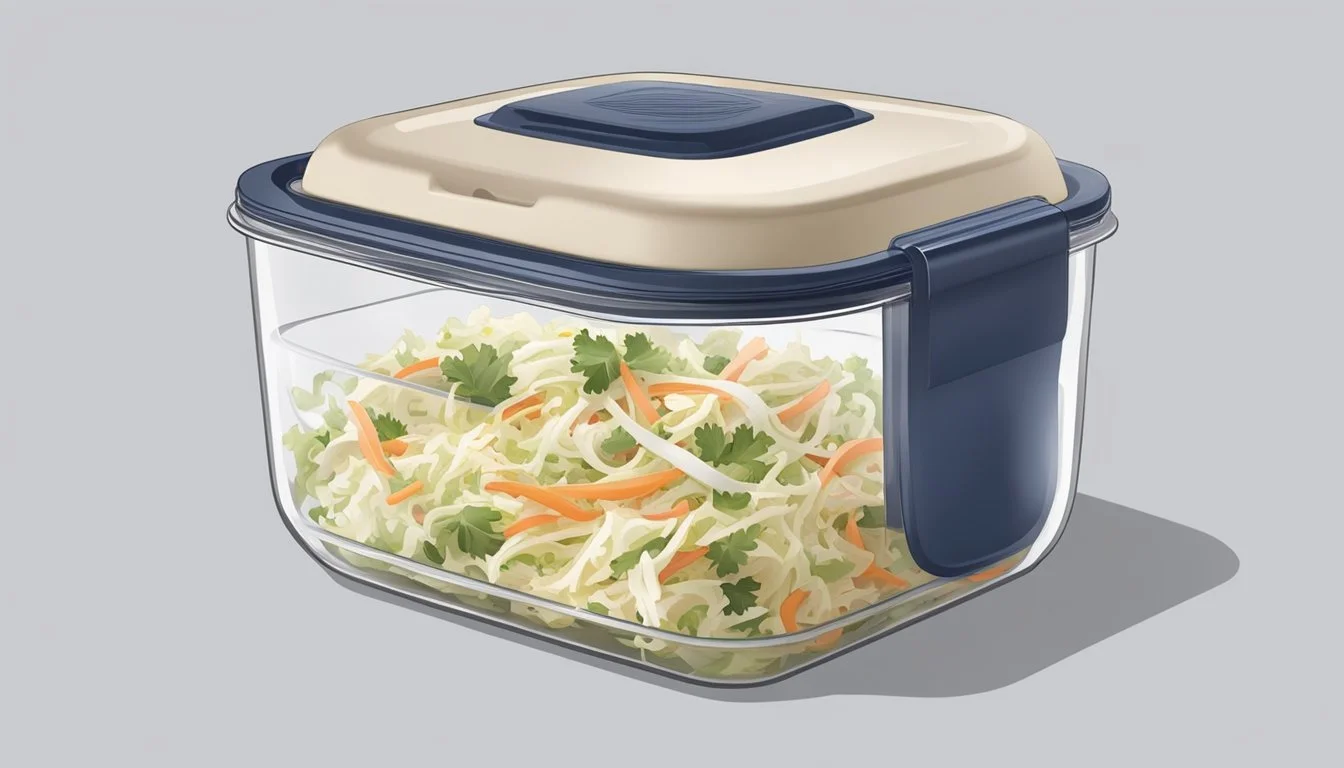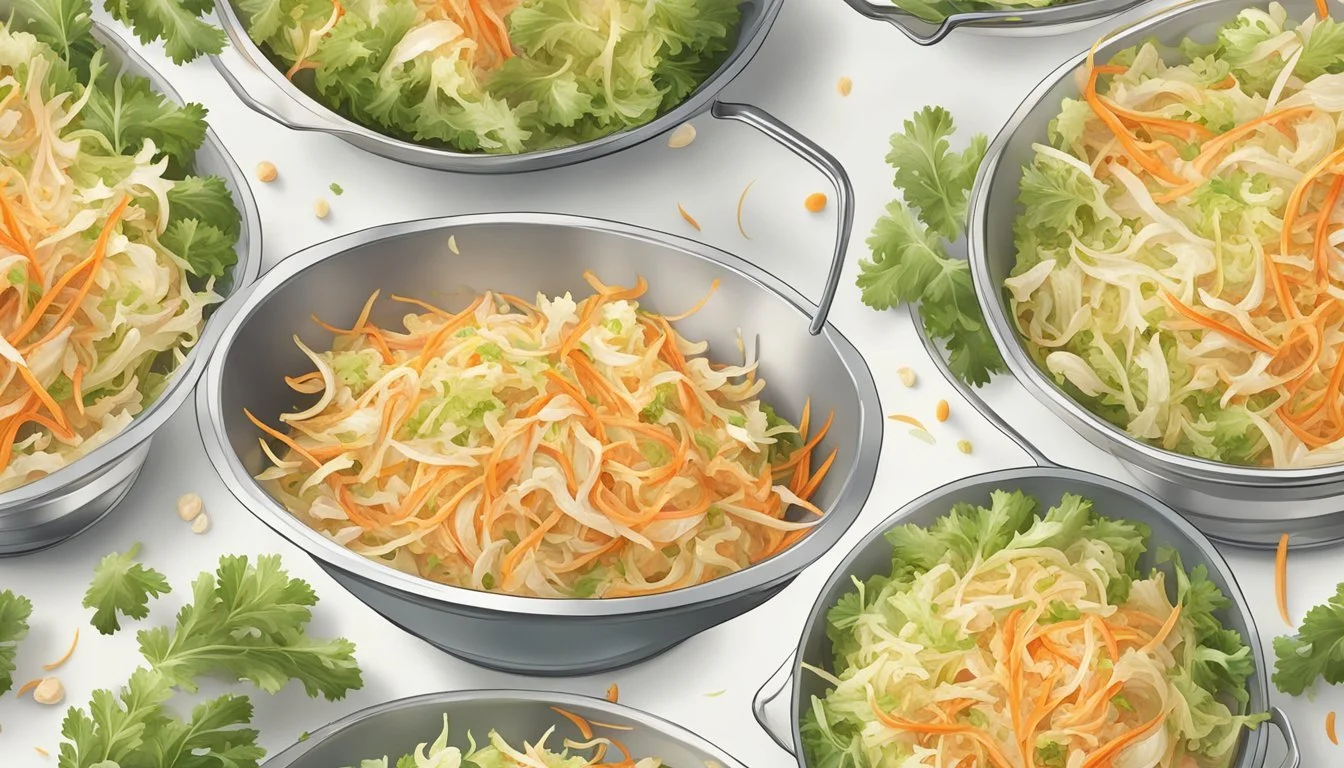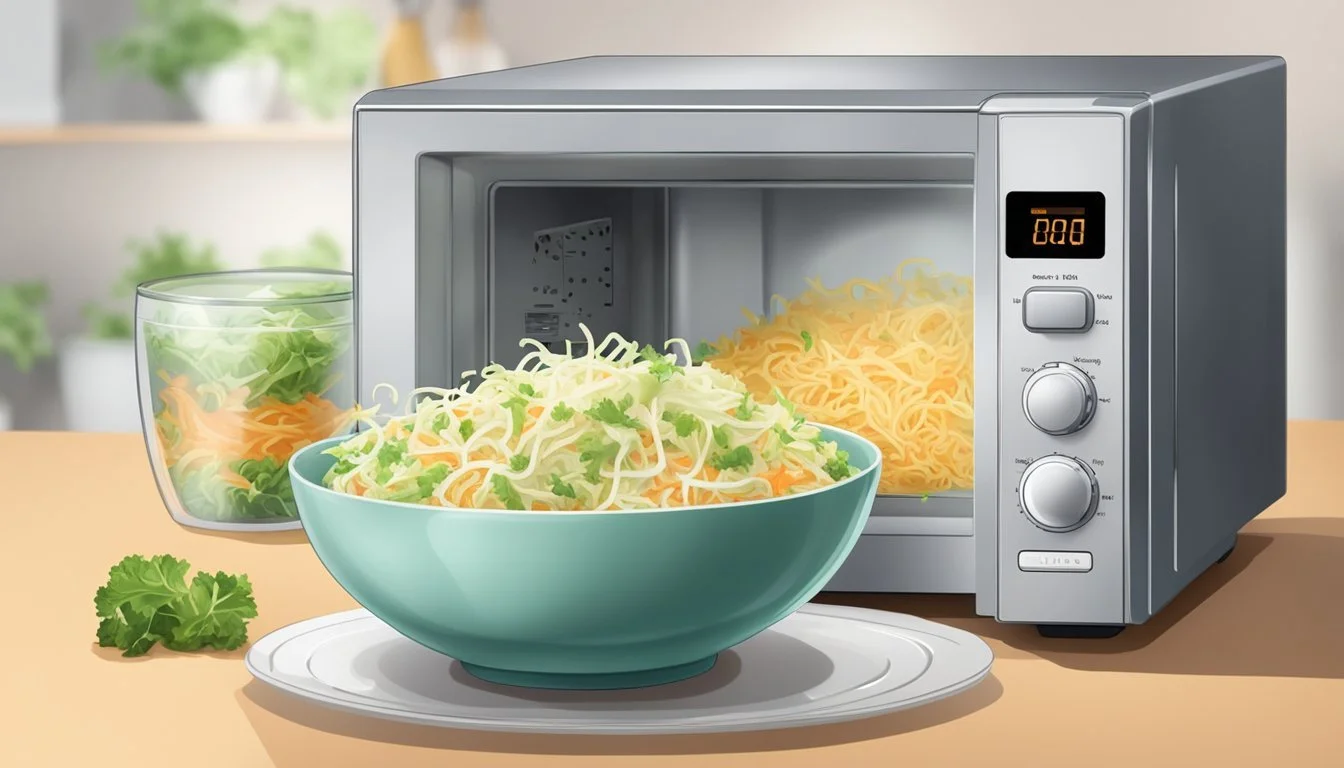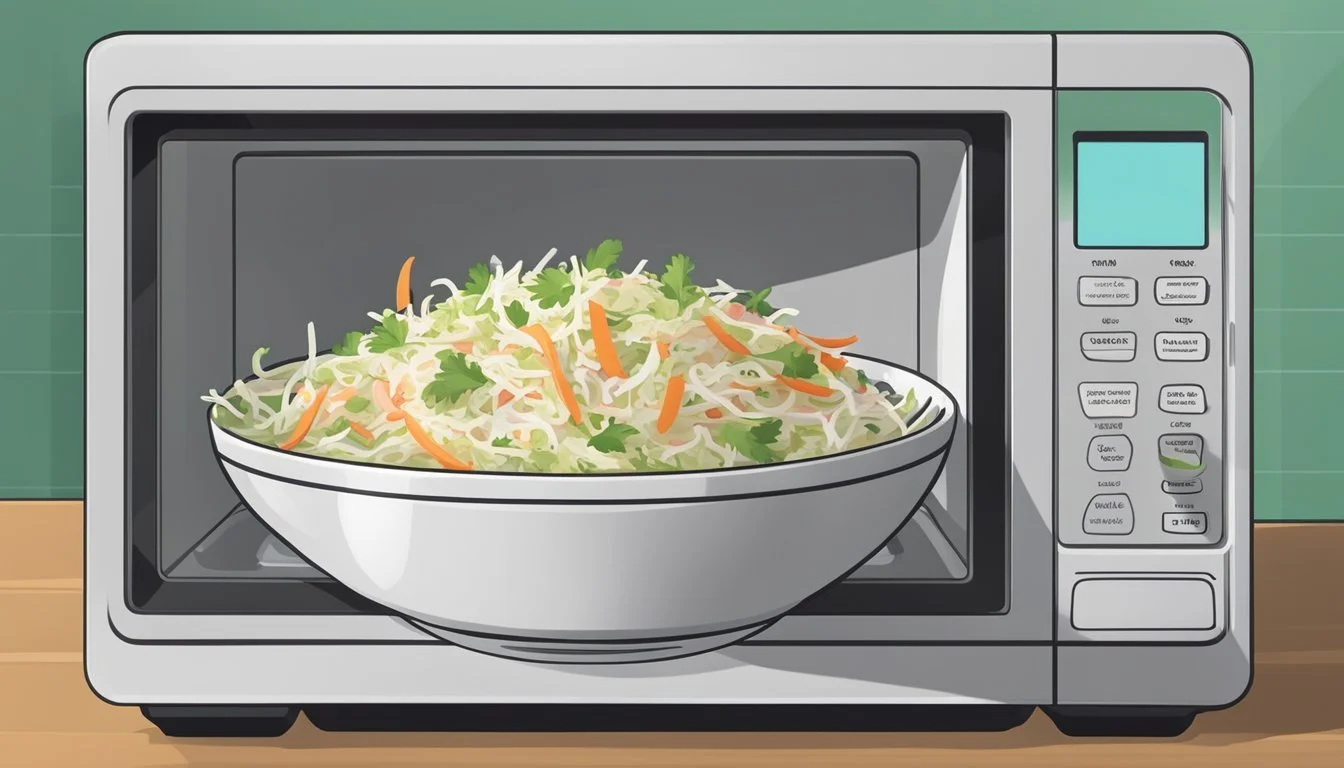Best Way to Reheat Coleslaw
Ensuring Crunchiness and Flavor Retention
Coleslaw stands as a favored side dish, lauded for its delightful crunch and the balance of sweet and tangy flavors that it brings to the table. However, when it comes to reheating coleslaw, one may encounter challenges in preserving its original texture and zest. Unlike many dishes that can be easily warmed up while maintaining their integrity, coleslaw requires particular attention to remain crisp and flavorful, owing to the delicate nature of its fresh ingredients and dressing.
It is widely recognized that the quality of coleslaw can diminish upon reheating, with its crispness giving way to sogginess and its flavor profile becoming muted. Nevertheless, there are methods and techniques that can effectively minimize these effects, ensuring that the coleslaw retains much of its characteristic appeal. A thorough approach, focusing on temperature control and the prevention of unnecessary exposure to heat, is essential in keeping the coleslaw as inviting as when it was first prepared.
Understanding Coleslaw Fundamentals
Coleslaw is a staple side dish that brings a unique texture and flavor to meals. To appreciate its role in cuisine, understanding its foundational elements is crucial.
Defining Coleslaw
Coleslaw primarily consists of shredded cabbage, which can be either green cabbage or red cabbage, and often includes carrots. A coleslaw recipe can vary, but the core ingredient is always cabbage.
Importance of Coleslaw Texture
The texture of coleslaw is one of its defining features—it should be crunchy and fresh. The crunch primarily comes from the well-shredded cabbage and carrots that need to be crisp to ensure the desired bite.
Coleslaw Dressing Basics
The dressing binds the coleslaw and is typically a blend of mayonnaise, vinegar, sugar, and salt. The balance of these ingredients determines whether the coleslaw dressing leans towards a creamy profile or a tangy, vinaigrette-like character.
Preparation Tips for Optimal Crunch
Maintaining the crunch in coleslaw is pivotal to its texture and appeal. These preparation tips ensure a coleslaw that is both refreshing and crisp to the bite.
Selecting the Right Ingredients
For crunchy coleslaw, the selection of fresh, firm vegetables is essential. This should include green cabbage, known for its stiff structure, along with carrots and celery for additional crunch. Ideally, one should opt for shredded cabbage and choose fresh onions for their crisp bite and pungent flavor.
Cutting Techniques for Crisp Texture
Shredding the cabbage thinly and uniformly is critical for a crisp texture. Using a sharp knife or a mandoline ensures consistent cuts, which contribute to the coleslaw's crunch. Carrots should be julienned or shredded finely, not only for their flavor but also to complement the cabbage in texture.
The Art of Dressing Application
The balance while adding dressing is fundamental; too much can make the slaw soggy. Use a light hand with the mayo or vinegar - be it white or apple cider vinegar. It's recommendable to lightly toss the vegetables with the dressing to coat them evenly without overwhelming the delicate texture of the ingredients. Dress the coleslaw just before serving to retain maximum crunch.
Proper Storage Techniques
The proper storage of coleslaw is essential in maintaining its crunchy texture and vibrant flavor. It involves managing moisture levels and temperature to ensure freshness.
Refrigeration Tips
Temperature: Coleslaw should always be stored in the refrigerator. The ideal storage temperature is between 34°F and 38°F, which slows down bacterial growth and keeps the salad crisp.
Containers: For optimal freshness, coleslaw should be stored in airtight containers.
Moisture: A key factor in refrigerator storage is controlling moisture. To prevent excess water buildup, one can line the container with paper towels which absorb extra moisture.
Preventing Sogginess in Coleslaw
Materials:
Paper Towels: Use paper towels to gently pat down the coleslaw, removing any free-standing water before storing.
Plastic Wrap: Covering the surface with plastic wrap under the container lid can also help keep the coleslaw dry and fresh.
Techniques:
Salad Spinner: If the coleslaw becomes too watery, using a salad spinner before refrigeration can help remove excess water and maintain the crunch.
Sodium: Moderately salting the coleslaw prior to storage can help draw out moisture without compromising the flavor.
Reheating Methods to Maintain Crunch
When reheating coleslaw, the objective is to preserve its characteristic crunch and prevent sogginess, ensuring that the texture and flavor of the vegetables are as fresh as possible.
Dry Heat Techniques
Oven Method:
Preheat the oven to a low temperature, around 200°F, to gently reheat the coleslaw without cooking it further.
Spread the coleslaw in a thin layer on a baking sheet lined with parchment paper to ensure even heat distribution.
Microwave Method:
It is not recommended to use a microwave to reheat coleslaw as it introduces moisture and can make the vegetables limp.
Moist Heat Avoidance
General Guideline:
Avoid any reheating methods involving steam or boiling water, as they introduce moisture that can wilt the coleslaw, compromising its crunch.
Revitalizing Dressing Application
Refreshing Coleslaw:
If the coleslaw has become dry, lightly apply fresh coleslaw dressing to the salad just before serving to enhance flavor without making it soggy.
To remove excess moisture from coleslaw that has been stored in the refrigerator, use a salad spinner or gently pat the coleslaw dry with paper towels before applying the fresh dressing.
By following these methods, the coleslaw's textures and flavors can be enjoyed as intended, with the vegetables retaining their crispness and the dressing contributing to the overall savory experience.
Ingredient Interactions and Coleslaw Quality
Understanding the interactions between coleslaw ingredients is crucial for ensuring optimal texture and flavor. The chemical reactions between acid, fat, and sodium can affect the cabbage's crunchiness, the dressing's mouthfeel, and the overall shelf life of the coleslaw.
Acid and Cabbage Chemistry
Acidic components in coleslaw, such as vinegar or apple cider vinegar, initiate a reaction with the cabbage that can soften its texture. However, when used in moderation, these acids can enhance the coleslaw's flavor profile without compromising the crunch. Vinegar can help to preserve the vibrant color of red cabbage and add a pleasant tanginess to the mix.
Fat Content and Coleslaw Mouthfeel
Fats in coleslaw dressings, derived from ingredients like mayo or sour cream, contribute to a creamy and satisfying mouthfeel. The type of fat used can dictate the coleslaw's richness and can act as a flavor carrier for other ingredients. For a lighter texture, some recipes may substitute part of the mayo with sour cream or yogurt.
Sodium's Role in Coleslaw Preservation
Sodium, most often introduced through salt, serves several functions in coleslaw. It not only seasons the cabbage and accentuates the flavor of additives like carrot, but it also draws out moisture, aiding in the preservation of the coleslaw. This extraction of water through salting, especially when done prior to adding dressing, can help maintain the desired crunchiness of the cabbage.
Enhancing Flavors and Seasoning Adjustments
When reheating coleslaw, maintaining its crunchy texture is just as important as enhancing its flavors. Seasoning adjustments can help revitalize a coleslaw's taste, ensuring it remains as palatable as when it was fresh.
Sweetness Balance
To achieve the right sweetness balance, a cook may opt to add a pinch of sugar or a drizzle of honey to the coleslaw. These ingredients should be used sparingly to complement the natural sweetness of the cabbage and carrots.
Honey: Adds a rich, nuanced sweetness.
Sugar: Provides a straightforward, clean sweet taste.
Herbs and Spices for Zest
Incorporating herbs and spices can significantly boost the coleslaw's zestiness. For a refreshing tang, dill is a top choice, while parsley and cilantro introduce a fresh, herby element. A subtle pinch of cumin can create a warm, earthy twist.
Dill: Tangy flavor, pairing well with creamy dressings.
Italian Seasoning: A blend that can include basil, oregano, and thyme, among others, offering a Mediterranean zest.
Celery Seed: Brings a slight bitterness that complements the creaminess of coleslaw dressing.
Black Pepper: A classic spice for heat and pungency.
Harmonizing Salt and Vinegar Ratios
The balance between salt and vinegar is critical in coleslaw for enhancing both flavor and preservation. A cook should taste and adjust these components to ensure a harmonious profile, where neither saltiness nor sourness dominates.
Vinegar: Provides the acidic note essential for flavor contrast.
Salt: Acts as a flavor enhancer and should be adjusted to avoid overpowering the dish.
Serving and Presentation
When serving coleslaw, one should consider the balance and harmony it brings to the overall meal. The texture and flavor of coleslaw can enhance a variety of dishes, from proteins to sandwiches, making it a versatile side.
Pairing Coleslaw with Proteins
Coleslaw pairs wonderfully with a variety of proteins. Whether it is grilled chicken, tantalizingly seasoned fish, or a classic deli sandwich, the crispness of the cabbage adds a refreshing contrast. On the grill, one could serve a scoop of coleslaw alongside smokey barbequed meats to cut through the richness. For seafood lovers, a side of coleslaw complements the delicate flavors of grilled fish.
Grilled Chicken: Serve alongside coleslaw to bring a crisp texture.
Fish: A light and citrusy coleslaw can highlight fish's subtle flavors.
Burgers: Add a spoonful of coleslaw for an extra crunch.
Coleslaw as a Standalone Dish
Coleslaw can also shine as the star of the plate. A standalone serving of coleslaw, especially when it's made with a variety of colorful vegetables and a tangy dressing, can be quite satisfying. One can elevate this standalone dish by ensuring the coleslaw is chilled and the vegetables are cut uniformly for the best mouthfeel.
Presentation: Serve in a chilled salad bowl or plate with a garnish of green onions for color.
Creative Toppings and Garnishes
To add a creative twist, one can introduce a range of toppings and garnishes that complement the base flavors of the coleslaw.
Tacos: A garnish of freshly chopped green onions can add both color and a sharp flavor to coleslaw-topped tacos.
Sandwiches: For an extra crunch, consider adding boldly flavored toppings like radish slices or jalapeños.
Variety: Colorful garnishes like pomegranate seeds or a sprinkle of sesame seeds can make the coleslaw visually appealing and add a pop of flavor.
Remember, the key to a great coleslaw presentation is to maintain the crunch and freshness of the vegetables, and to pair it with complementing dishes and garnishes to enhance the overall dining experience.
Alternative Coleslaw Variations
Coleslaw can be a versatile side dish with multiple variations to suit different dietary needs and flavor preferences. Experimenting with ingredients can result in unique combinations that enhance both the taste and the texture of coleslaw.
Vegan and Dietary Specific Options
For a vegan coleslaw, one can create a creamy dressing using plant-based mayonnaise mixed with apple cider vinegar, a pinch of sugar, and mustard for tanginess. This coleslaw recipe omits traditional mayonnaise, which contains eggs, and opts for vegan alternatives to cater to dietary restrictions. Utilizing purple cabbage can add a vibrant color, while shredding in additional veggies like carrot increases nutritional content and adds a sweet crunch.
Global Flavor Inspirations
Asian-inspired coleslaw: Incorporate ingredients like soy sauce, sesame oil, and lime juice to give coleslaw an Asian twist. Toss in chopped green onions for a fresh, pungent kick.
Greek coleslaw: Mix green cabbage with Kalamata olives, feta cheese, and a dressing made from olive oil, red wine vinegar, and oregano for a Mediterranean flair.
Mix-ins and Texture Elements
Adding various mix-ins can elevate the traditional coleslaw to become a more engaging dish:
Crunch: Introduce seeds or nuts for a crispy element.
Additional veggies: Carrots, bell peppers, and red onion can amplify texture and flavor.
Dressing variations: For less traditional but equally flavorful options, consider using alternatives like vinaigrettes or citrus-based dressings.
Troubleshooting Common Coleslaw Issues
When reheating coleslaw, certain issues may arise that can affect texture and flavor. This section provides targeted solutions to preserve the coleslaw's crunchy texture and ensure a balanced flavor profile.
Preventing a Watery Slaw
A common challenge with coleslaw is maintaining its crispness when reheating. One effective strategy is to salt the cabbage beforehand to draw out excess moisture. Following these steps can help:
Salt Technique: Toss shredded cabbage with a teaspoon of salt and let it sit in a colander for 1-4 hours before patting dry.
Storage Tip: Keep dressing separate from the vegetables until the coleslaw is ready to be reheated and served.
Restoring Overly Sweet or Bitter Flavors
Coleslaw flavor imbalances can occur, especially in sweetness and bitterness. Here's how to adjust:
For Excessive Sweetness: Add a splash of vinegar or lime juice to introduce acidity, which can counteract the sweetness.
For Bitterness: A small amount of sugar can help balance bitterness, creating a more harmonious flavor.
Fixing a Dull Coleslaw Dressing
Dressings can become flat-tasting after storage. To revitalize the dressing:
Acid Addition: Incorporate more vinegar or lime juice for a tangy kick.
Creaminess: Introduce a spoonful of sour cream to add body and smooth out the flavor profiles, enhancing the coleslaw's overall appeal.
Nutritional Information and Health Considerations
When considering how to reheat coleslaw to preserve its crunchy texture and flavor, one must also be mindful of how this process may affect its nutritional profile. The following subsections delve into the specifics of the coleslaw's nutritional attributes and considerations for various dietary needs.
Caloric and Macronutrient Profile
Coleslaw is primarily composed of cabbage, which is low in calories but offers a good balance of macronutrients. A standard serving of coleslaw can vary significantly in caloric content, largely dependent on the type of dressing used.
Calories: Ranges from 70 to 150 per serving
Carbohydrates: Approximately 10g per serving, predominantly from natural sugars and dietary fiber in the cabbage and carrots.
Saturated Fat: Minimal in coleslaws made with yogurt or vinegar-based dressings; higher in mayonnaise-based variants.
Cholesterol: Typically low, unless a mayonnaise-based dressing with eggs is used.
Vitamins and Dietary Fiber
Coleslaw is an excellent source of some essential vitamins and high in dietary fiber which is beneficial for digestive health.
Vitamin A: Present due to ingredients like carrots, contributing to eye health.
Vitamin C: Abundant in cabbage, supporting immune function.
Fiber: A small serving contains about 2g of fiber, aiding in satiety and digestion.
Potassium: Naturally occurring in the vegetables used.
Restrictive Diet Adaptations
For individuals on specific diets, coleslaw can often be adapted to align with vegan, gluten-free, or other dietary restrictions.
Vegan: Can be made without animal products by using plant-based mayonnaise or a vinaigrette.
Gluten-Free: Coleslaw is naturally gluten-free but being cautious with store-bought dressings that may contain gluten is advised.
Calcium and Iron: Levels vary with the choice of vegetables and dressings; adding seeds or nuts can enhance the content.
Final Thoughts on Coleslaw Perfection
When aiming for coleslaw perfection, one prioritizes crunch and flavor. The best coleslaw recipe often involves a careful balance of texture and seasoning. Achieving this begins with the selection of fresh ingredients, particularly the cabbage — the cornerstone of crunch in homemade coleslaw.
To make coleslaw that stands out:
One should use a sharp knife or a mandoline for even, thin cabbage shreds.
Integrating carrots adds both a sweetness and an additional layer of crunch.
The dressing should coat but not drench the vegetables.
Here are key points for maintaining coleslaw integrity upon reheating:
Component Guidance Cabbage Thinly sliced for consistent texture Carrots Julienne for complementary crunch Dressing Ratio balanced to avoid sogginess
For a delicious twist, one can add ingredients like apple slices or fennel for an extra crunch. However, be mindful that these add-ons should complement the coleslaw, not overpower it.
Lastly, coleslaw is best served fresh. While it can be refrigerated, reheating is not advisable as it diminishes its characteristic crunch. If necessary, one should only gently stir the coleslaw to redistribute the flavors just before serving. They achieve perfection through the marriage of a crispy texture with a well-rounded, tangy, and sometimes slightly sweet dressing, ensuring each bite is as satisfying as the first.
Appendix: Additional Resources and References
Coleslaw Recipes and Prep Time:
For those interested in a variety of coleslaw recipes, including traditional and modern twists, readers can refer to culinary websites such as Cooking For My Soul and Once Upon a Chef. Preparation times vary, but a typical coleslaw can be prepared within 20 minutes, not including marinating or chilling time.
Marinate and Consistency:
To enhance the flavor and consistency of coleslaw, allowing it to marinate in the dressing for at least 2 hours before serving is recommended, as noted by Real Simple. The dressing can be a simple vinaigrette or a creamy base using mayonnaise or sour cream.
Substitutions and Dressing:
Substitutions for common coleslaw dressing ingredients include agave nectar or maple syrup in place of granulated sugar, as well as the introduction of diverse acids such as lemon juice, or alternative condiments like Dijon mustard.
Equipment:
The use of a mandolin for slicing cabbage can yield uniform thin slices, leading to an even texture in the coleslaw, which is crucial for both taste and appearance.
It is generally not recommended to freeze coleslaw due to texture degradation upon thawing. Fresh preparation is advised for the best quality.
Barbecue and Picnic:
Coleslaw is often served as a crunchy, refreshing side dish at barbecues and picnics. Its tangy and sweet flavors complement grilled meats and other picnic fare.
Seasoning:
Seasoning with kosher salt and freshly ground black pepper is critical to extract moisture and season the cabbage. The process is detailed in articles from Kitchn and Tasting Table.
Table of Ingredients for Coleslaw Dressing:
Ingredient Quantity Substitution Options Mayonnaise 1 cup Sour cream, Greek yogurt Lemon Juice 2 tablespoons Vinegar, other citrus juices Dijon Mustard 1 tablespoon Other mustards, wasabi Granulated Sugar 2 teaspoons Maple syrup, agave nectar, honey Kosher Salt To taste Sea salt Freshly Ground Pepper To taste Ground white pepper, chili flakes
For detailed instructions and additional tips, readers are encouraged to consult the sources provided.

